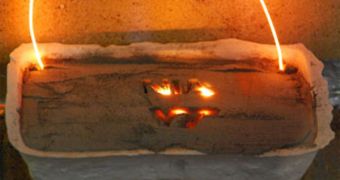Visiting and even settling on the Moon has been a long-standing dream among humans, but one of the main challenges that obstruct this objective is the difficulty of building structures on the natural satellite of the Earth. Oxygen supplies would never be enough for the long time constructing a building takes, not even if the astronauts come aboard the Ares V rocket. Now, researchers at Virginia Tech have come up with a solution that may solve this as-of-yet-inexistent problem, by introducing the concept of “moon bricks,” which are easily to produce and arrange.
The team at VT has had a very simple idea driving their initiative – construction times, durability, and ease-of-use. A potential human settlement on the Moon will pose a lot of technological problems, and the humans would require a base of operations, which would have to be erected fairly quick, and be able to protect them from harm. With VT's bricks, that become possible.
The system is entirely inter-locking, so future astronauts will not have to operate mortar or similar materials when building igloo-like structures. Basically, all the humans would require for their base would be regolith (rocks that can be found plentiful on the Moon), some aluminum, which could be extracted from the ship the mission would use to get there, and a spark of electricity.
Electrical current is necessary, because it's responsible for igniting the earth-aluminum mix. As soon as a flicker hits the mix, it starts sprinkling sparks like fireworks do, and the chemical reaction is self-sustaining until the brick is completed. Because the system is so intuitive to use, VT experts say that building materials could be shaped into any desired shape. So, settlers could literally mold their “missing piece.”
This method of construction is the only one that could offer large amounts of building materials in a short period of time. Carrying materials from Earth is economically unsustainable, even if several tons might be loaded at once aboard NASA's Ares V delivery system. “The habitat would look just like an igloo. No nails, no cement would be necessary to hold it together. The shape of the bricks will do that,” Virginia Tech professor Kathryn Logan, who has been involved in the project, concludes.

 14 DAY TRIAL //
14 DAY TRIAL //